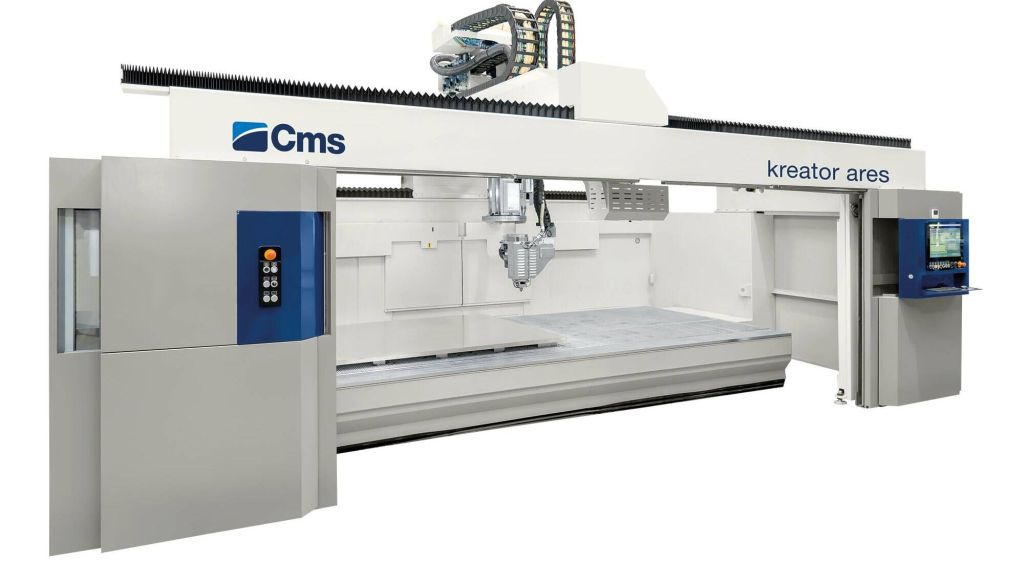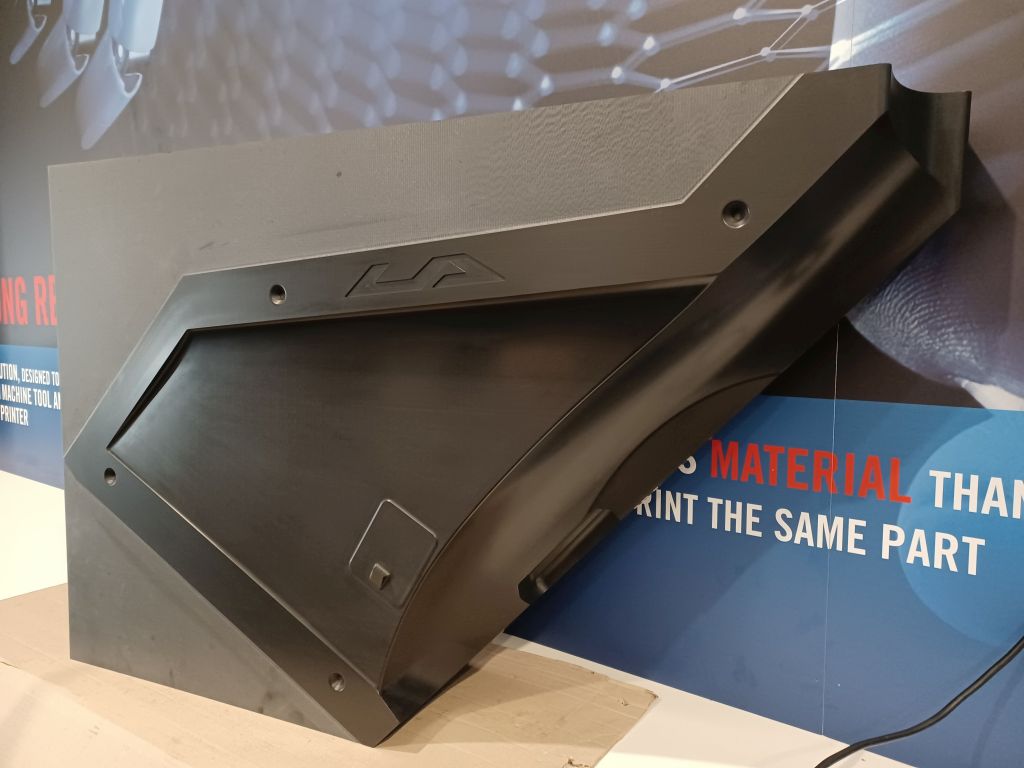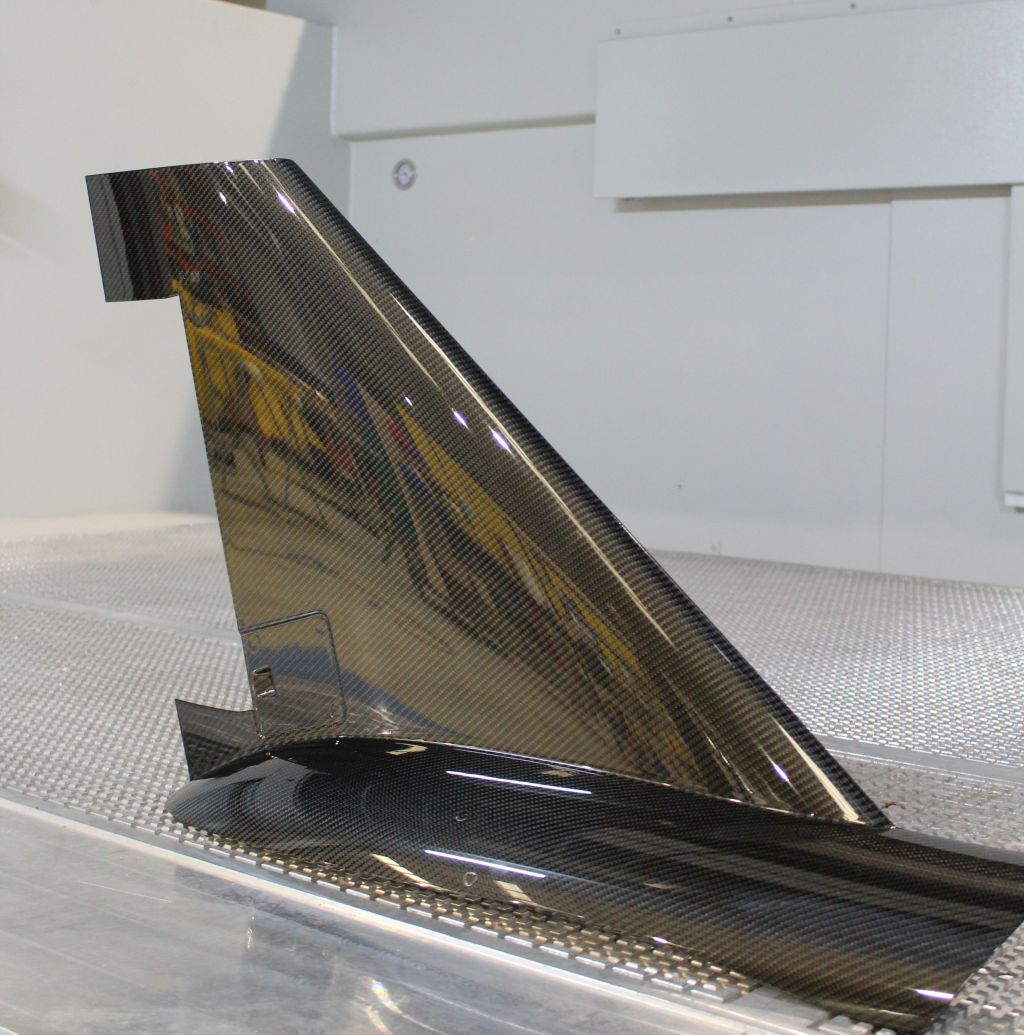New machine creates a scene!

United Aerospace’s managing director, Gareth Burks discusses the company’s recent machine tool collaboration with CNC machine tool builder, CMS and the installation of the very first CMS Kreator Ares large format additive manufacturing/CNC machining centre in the UK.
United Aerospace (UA) was established in 2004, in Pembrokeshire, Wales in a purpose-built 25,000ft2 facility, manufacturing composite components for a variety of industries. Starting out supplying the first-class aircraft seating industry, UA has diversified over the years to service a host of different industries whilst growing its in-house capabilities to offer a one-stop shop for all its customers’ needs. UA has developed the ability to design and manufacture tooling and components, as well as full assemblies and painting - all under one roof.

The latest technical and commercial collaboration with CNC machine tool builder, CMS brings benefits both parties, and is primarily based on continued knowledge sharing, ongoing application development and joint marketing activities. Once installed, the Kreator will become a system for real production, as well as effectively providing a UK showroom and laboratory to facilitate trials and demonstrations for potential UA and CMS customers.
Working with a range of materials to suit customer application requirements, UA will use this hybrid milling and large format additive manufacturing (LFAM) to develop and produce actual products for its clients, including autoclave tooling, jigs and fixtures for use in either its computerised autoclaves or assembly facility.
Q) Firstly, bring me up to speed with your latest company news?
2022 has seen UA add its biggest ever purchase in a CMS Kreator LFAM machine that will enable us to be the first company in the UK to use large format additive manufacturing technology to produce autoclave-ready composite moulds, assembly fixtures and prototype components in a vastly quicker time scale than traditional methods. This addition to our already existing state-of-the-art composite manufacturing equipment will enable us to offer both existing and new clients an even faster response to meet their needs and requirements.
Q) What are the types of demands placed on your company by today’s aerospace designers?
Customers are becoming more and more demanding each year as both their composite knowledge and education improves their requirements and demands increase. Customers are constantly looking for quicker and more advanced solutions as global demands on composites increase from every industry. It has become very apparent that as more industries realise their requirements for composites, the pressure is on the composite industry to come up with quicker, cheaper and more robust solutions.
Q) What was the main reason for selecting CMS’ Kreator LFAM machining centre over other manufacturers’ offerings?
After first seeing LFAM, we researched what options were out there and at what maturity levels they were at. We quickly realised that there were two schools of thought to LFAM: either print fast at volume and machine a lot off, or print more accurately and machine less. Given our diverse customer base we quickly assessed that the ability to print more finely would suit our probable needs going forward.

Once we had decided on this format, it was very apparent that CMS - together with its partnership with Fraunhofer - had put them at the front of the maturity stakes in this race. We already had a long history of working with CMS, having purchased two 5-axis CNC routers over the last ten years. By partnering with CMS - who have been developing this technology for the past five years - we would not only become the first composites company to offer this solution in the UK, but we would also be able to develop our solutions even quicker using their knowledge and experience.
Q) Primarily, what production processes is your Kreator most suitable for?
Initially, we intend to use our Kreator to print autoclave-ready tooling, as well as vacuum holding fixtures. We feel this is the area in the industry that needs to be improved quickly, as the traditional machine master pattern/prepreg mould route has not changed for over 20 years. We believe having the ability to print customer tools and be able to prove them in our autoclave will set us apart from all of our competitors. We have already received many enquiries asking for prototype parts and assembly fixtures, which we plan to do once our phase one stage has been perfected.
Q) Briefly outline your Kreator’s cycle time production process?
Timings are to be very much defined by the individual component, but the Kreator gives us the opportunity to print in both vertical and 45Ëš orientations, enabling us to print almost any shape. Part of our in-house development programme will be to determine the optimum print-to-machine ratio to see whether a slower, finer, more accurate print is better or worse than and higher volume print with more machining. This we feel will be determined on a part-by-part basis, as there is no defined rule book for this LFAM method, yet!
Q) Will Kreator lower cycle times of complex parts and do you have any real figures?
Using data already gained from CMS’ development, we are very confident that our standard lead-times to first-off components will be drastically reduce from the traditional methods.

Where previously the lead-time was months, we anticipate that it will now be weeks - and potentially where it was weeks, it could soon be days. CMS has already produced a lot of data on material usage and they have come up with some extremely promising figures. We are also confident that the power required to make a component using a Kreator will be less than the power requirements of traditional methods. The next phase for us is to assess the possibilities of generating our own power in order to run the Kreator ‘green’.
Q) Overall, how did you find working with the CMS team in terms of commissioning, support and general hand-holding?
Previous experience has been very good and is one of the reasons we chose the Kreator. Machine installation and commissioning are currently underway, so fingers crossed, it all goes smoothly and we progress together.
Q) What do you feel are the most important assets of a company?
In my experience, if you have the right people in the right positions and give them the right level of support, they will naturally define the strategy and look to use the latest technologies to achieve ever-improving results. It also helps when your factory is located in one of the most beautiful parts of the country.
Q) Finally, what differentiates your company from the competition?
What differentiates us from our competitors has always been our ability to take away as much of our customer stress as possible by projecting ourselves as high up their bills of materials as possible. Given our location, we have always been the most competitive on price within the UK. Ensuring we are constantly improving our technical offering and being at the forefront of the composites industry makes us an attractive proposition against our global competitors.









